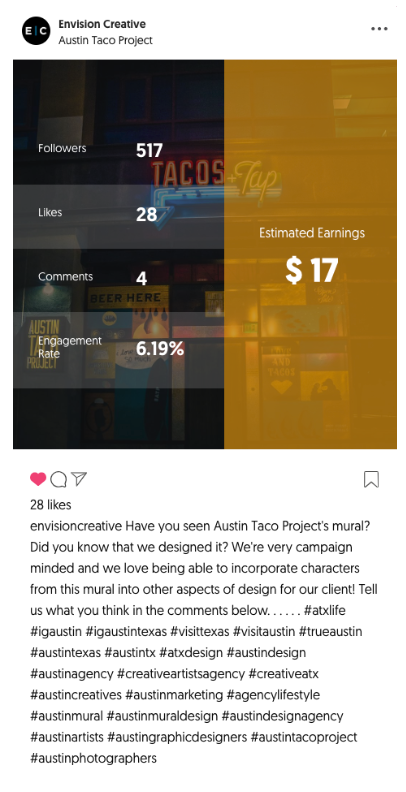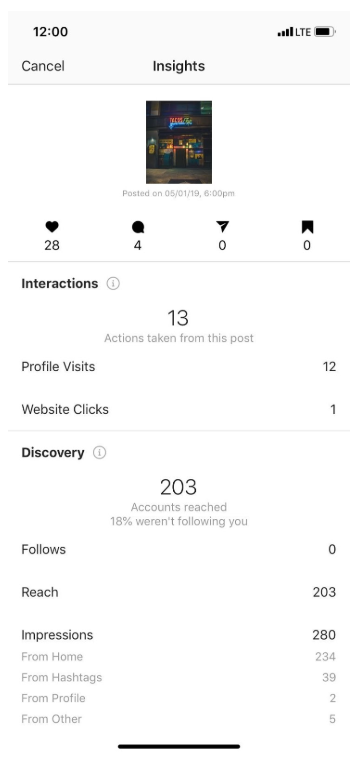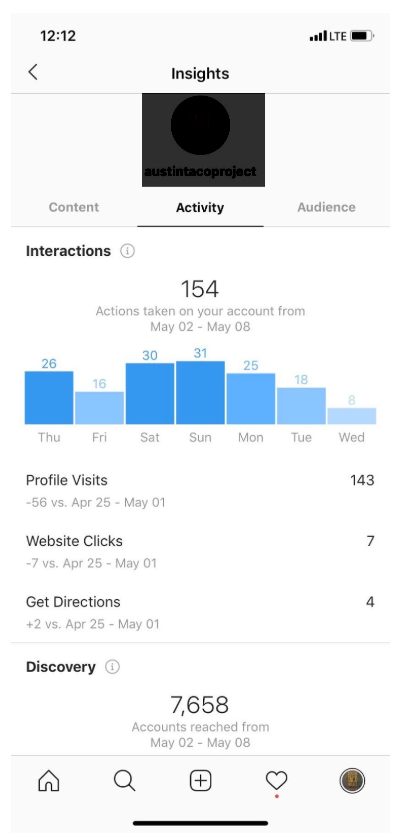Social media is one of the most important facets of digital marketing but how do you know it’s working? Without a list of social media metrics you’re tracking, how do you know what you’re doing is actually providing value and ROI? If you don’t have a social media presence, you’ve likely already fallen behind your competition. It’s not just enough to have to be on social media, you need to have a fully developed strategy–and one of the most important elements of executing that strategy is analytics.
Tracking social media metrics helps you judge the performance of your social media marketing efforts and enables you to adjust them as needed to ensure that your campaign is as successful as possible.
4 social media metrics that matter
Tracking the success of your social media marketing campaigns means understanding the key metrics that help tell you if things are working or not. We recommend tracking the following metrics to gauge the efficacy of your social efforts:
1. Engagement Rate:
Engagement Rate (%) = [(likes + comments + shares)/total followers] x 100
Definition: Your average engagement rate is the number of actions (likes, shares, comments) a post receives relative to your total number of followers.
What engagement tells you:

An engagement rate calculator can help you determine how your posts are performing.
Engagement is important because it’s used to measure how well a piece of content is performing on social media. It also allows you to track how actively involved your audience is with the content you share. It’s pretty common to come across an account with thousands of followers, but a very low engagement rate; this lack of engagement shows that there is a lack of connection between the followers and what the brand is posting.
Say you decide to share an educational post about your brand’s history and the engagement rate is higher than normal. You can use this information to determine that your brand’s audience likes educational posts and now you can adjust your content creation strategy to include more posts like these.
If your brand started a campaign around a new product it just released, the engagement rate on these posts will determine how well the campaign is doing.
To calculate the engagement rate take the total number of interactions on a post and divide it by the number of followers you have (there are also engagement rate calculators you can find online).
Interactions on each platform differ: Instagram actions include likes, comments, and saves while Facebook interactions are likes, comments, and shares.
The engagement rate also allows you to gain insight into what platforms your audience interacts with the most by looking at the engagement rate of similar posts on different social platforms.
The image to the right is a screenshot we took from an online engagement rate calculator. We like to use this calculator because it allows you to use a link to a specific post. You can see that our engagement rate is 6.19%.
2. Impressions & Reach:

An example of reach and impression insights you can get on Instagram.
Definitions:
- Impressions are the number of times your content is displayed on a screen.
- Reach is the total number of people who have seen your content since it went live.
These two metrics sound so similar it can be easy to get them confused, but they both show important information about how active your fans are and what type of content they like the most.
What impressions and reach tell you:
Impressions:
Impressions measure your ability to get your content in front of your intended audience.
Have you ever been scrolling through your Instagram feed and came across the same post more than once? Or have you ever seen content on your Facebook feed by a publisher like BuzzFeed Food and then later you see it again because one of your friends shared it?
These are examples of how one person can count for multiple impressions. Sometimes I see the same promoted Free People ad 10 times on my Instagram feed. Each of these views counts as its own impression. Keep in mind that the viewer does not need to engage with the post for it to count as an impression.
Reach:
Reach measures how far your content spreads on social media.
Example: You have 500 followers on Instagram and every single one of your followers sees your post, then you would have a reach of 500. Unfortunately, due to the algorithms of each platform, not all of your followers will see everything you post to your feed.
Let’s use the same example of having 500 followers with a reach of 250 and 1,000 impressions. This means that 250 of your followers saw the post, but those followers that saw it actually shared it. So although only 50% of your followers are active, those followers are very active and engaged.
These metrics also allow you to gain more clarity on your audience’s habits. If you are unsure what time your
audience is most likely to be online, you can test out different posting times and see what content receives the highest reach and impressions.
By looking at your impressions, reach and engagement rate you can learn more about what type of content your followers enjoy and engage with. For example, if you are testing out a new campaign focused around video content and you see that your impressions, reach and engagement rate is all high, you can imply that your audience likes video content. In contrast, if your reach is high, but your engagement rate is low, maybe it is time to rethink the type of content you’re posting or what you are writing. Understanding these metrics allow you to tailor your future content to be more engaging therefore gaining a more active audience.
3. Account Activity:

An example of what account activity looks like on Instagram.
Definition: Account activity shows the various activities fans and followers can do on your social page. These typically cover things like profile visits, website clicks, call, follows, bookings, etc.
What account activity tells you:
By looking at your account activity you can see what actions your audience took after viewing your content. For example, say you run an Instagram account for a restaurant and post a picture of a delicious meal with a CTA (call to action) telling your audience to come in for dinner and then you see that from that post your profile had 10 visits. This shows you that this is the type of content your audience likes to see and the type of content that actually gets them to take action and come to your restaurant.
Account activity is also a great metric to be able to report on. Not only is your audience on social media, but they see your content and want to learn more about your products or services, and this interest can lead to conversions.
4. Shares:
Definition: Shares tells you how many times a post was shared by a user to their own page or another business page.
What shares tell you:

Shares can be found on your post insights, like on this example from Facebook.
Shares are a great social media metric to track because it allows you to learn more about who your audience is and what type of content they respond to. If your audience is willing to share your content with their friends or followers that means they stand behind your brand and are willing to be brand advocates, which in the end creates brand loyalty. If your followers are sharing your content with their friends that creates brand awareness which is a large part of why we use social media for marketing. By looking into who is sharing your content, you can also learn more about who your audience is, which can help you readjust your marketing strategy if needed or confirm that you’re on track.
Social media metrics are important, y’all!
As digital marketers, it can be difficult to show how successful your social media marketing efforts are, especially to someone who might not fully understand the value of social media. This is why these metrics are so important. By understanding these 4 social media metrics you will be able to judge the performance of your campaigns and confidently report on who your audience is and what type of content your audience engages with the most and how you need to readjust your marketing strategy.
Side note:
We’ve spent a lot of time talking about quantitative social media metrics, but there are also qualitative ones which cannot be fully tracked or measured but are used to inspire and connect with your audience. Taking advantage of these opportunities to build relationships with your audience will allow you to stand out from your competition. Check back for an upcoming blog discussing what we refer to as inspiration metrics.
-FINAL(01-00)-White&Blue-01.svg)





